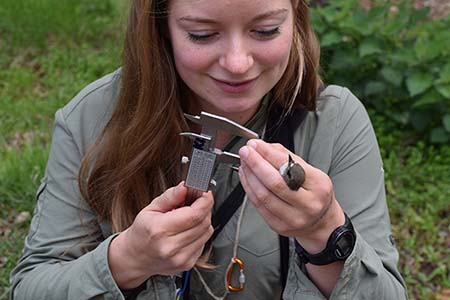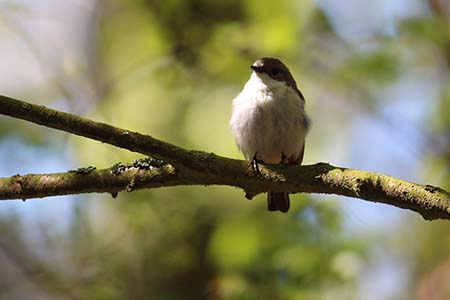Female bird falls victim to her Valentine
Female songbirds can have troublesome love lives. In some species, such as the European pied flycatcher, the male birds try to hook up with an extra female bird once they’ve already found a mate. It was long believed that the female bird whose eggs hatched first did not suffer from her mate keeping a second family. After all, these males were already putting in the effort for their first broods. University of Groningen PhD student Koosje Lamers and Prof. Christiaan Both ‘reveal’ that female birds who share a mate with another female have a lower chance of survival, and that the risk of dying is increased by brooding early in the spring.

Both of the University of Groningen ecologists have been studying a large population of European pied flycatchers brooding in nesting boxes in the province of Drenthe, the Netherlands, for 12 years. The vast majority of the birds are monogamous but some males keep multiple female mates. When the first mate is brooding her eggs, her Valentine searches for a second nesting box down the street, where he will start singing again to attract a new mate. It appeared that in particular, the female birds who laid their eggs relatively early on in the year often had to share their mates with a second female. The researchers moved female European pied flycatchers from the Netherlands to Sweden in an experiment. On average, these females brooded much earlier than usual in Sweden. The male birds with whom these females mated also had a second female mate more often.

Sharing is NOT caring
‘Brooding early on can lead to a female bird having to share her mate, which can have serious negative consequences. Not necessarily for her young ones, but especially for herself,’ says Koosje Lamers. In a recent publication in the Journal of Avian Biology, the researchers describe that the number of offspring to survive their first year did not depend on whether the nest had a monogamous father or whether this male kept a second mate. The first female mates did have a rough time, however. The females who shared a mate survived until the next year less often. The UG ecologists suspect that female birds do indeed receive less help from their mates when they have a second mate. This means that this first female mate likely takes on a larger part of the care for the offpsring, at the expense of the female’s own health and future.

Climate change
The precarious love lives of the European pied flycatcher do not help them in adjusting to climate change. Previous research has shown that the flycatchers have started breeding earlier on in the season to keep up with the change. Christiaan Both: ‘This has its downsides, as females who breed early on run an extra risk that their ‘Valentine’ will conquer the hearts of other females, with all the negative consequences falling on the first female.’
| Last modified: | 22 July 2021 09.46 a.m. |
More news
-
07 April 2025
Plastic recycling: how to best reuse carbon atoms
Scientists at the University of Groningen are working on new ways to recycle plastic waste into new, high-quality products.
-
07 April 2025
Gratama Jubilee gift for Marleen Kamperman and Marijke Leliveld
Prof. Marleen Kamperman and Marijke Leliveld received EUR 100,000 from the Gratama Foundation for their research project aimed at producing organic textiles for sustainable fashion.
-
03 April 2025
IMChip and MimeCure in top 10 of the national Academic Startup Competition
Prof. Tamalika Banerjee’s startup IMChip and Prof. Erik Frijlink and Dr. Luke van der Koog’s startup MimeCure have made it into the top 10 of the national Academic Startup Competition.
